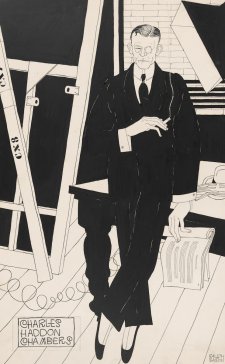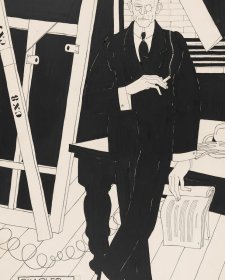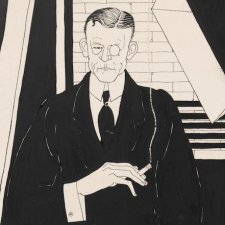Dame Joan Sutherland OM AC DBE (1926–2010) was one of the world's greatest operatic divas. After winning the Mobil Song Quest in 1950, Sutherland left Sydney to study at the Royal College of Music in London, making her debut at Covent Garden in 1952 in The Magic Flute. Within a few weeks she was appearing there in Norma, with Maria Callas in the title role. In London a fellow expatriate, conductor Richard Bonynge, became her mentor and later her husband. He encouraged her to abandon the heavier vocal roles she favoured and to become a coloratura soprano; the transformation was key to her success. Sutherland's 1959 performance in Lucia di Lammermoor at Covent Garden launched an international career that spanned nearly 40 years, during which her distinctive voice, immense vocal range and wide repertoire earned her the title 'La Stupenda'. Luciano Pavarotti described her voice as 'certainly the greatest voice this century'. She was Australian of the Year in 1961, the second year the title was awarded. Thirty years later, she received the Order of Merit – one of a mere handful of Australians, and the only Australian woman, on which that honour has been bestowed. In 1974, Sutherland and Bonynge returned to Australia, and over the next decade they lent their star power to the Australian Opera. In the years following, she was designated a Living National Treasure. Sutherland retired after her last performance at Covent Garden on New Year's Eve 1990 and lived in Switzerland for many years. She was the first Australian to be given a memorial service in Westminster Abbey since Sir Robert Menzies died in 1978.
Dame Nellie Melba GBE (1861–1931), world-renowned soprano, was born Helen Porter Mitchell in Melbourne. She first sang in public at age six and studied piano as a child. At the age of twenty she went with her widower father to Mackay, where she married Charles Armstrong and had a son in 1883. A year later she left her husband, returning to Melbourne to study under Pietro Cecchi. She travelled to London with her father in 1886 and began lessons in Paris with Mathilde Marchesi, on whose advice she adopted the name Melba, derived from her native city Melbourne. After making her début in Brussels in 1887, aged 26, she appeared regularly at Covent Garden, where she maintained a private dressing room and gave her final performance in 1926. Over the same period, mobbed everywhere by fans and enjoying the attention of many lovers, she made sensational tours of the USA and Europe. On Melba's successful tour of Australia in 1902, vast crowds gathered to see her. Partly resident in Australia from 1909 onwards, she sang the national anthem at the opening of Parliament House, Canberra in May 1927, during the period in which she made so many farewell appearances that the phrase 'doing a Melba' came to mean making repeated announcements that one is leaving, without actually departing. On her grave in Lilydale Cemetery, Melbourne, is the farewell uttered by Mimi in La Bohème: 'Addio, senza rancor' ('Goodbye, no hard feelings'). Dame Nellie Melba appears on the Australian $100 note and a Canberra suburb is named in her honour.
Richard Bonynge AO CBE (b. 1930), conductor, won a scholarship to the Sydney Conservatorium of Music when he was twelve. He studied there with Lindley Evans, who had been an accompanist for Melba. At the age of 14 Bonynge performed the Grieg Piano Concerto with the Sydney Symphony Orchestra. He married Sutherland in 1954, made his debut as a conductor in Rome in 1962, and conducted his first opera, Faust, in Vancouver in 1963. From 1975 to 1986 he was the Principal Conductor and Artistic/Musical Director of the Australian Opera, holding a similar position with the Vancouver Opera from 1974 to 1978. Bonynge specialises in the bel canto repertoire, but has made a great number of opera and ballet recordings and has conducted at many music festivals throughout the world.
Collection: National Portrait Gallery
Gift of Eric Harding and Athol Hawke 2002
Arthur Horner (age 57 in 1983)
Dame Joan Sutherland OM AC DBE (age 57 in 1983)
Richard Bonynge AO CBE (age 53 in 1983)
Luciano Pavarotti (age 48 in 1983)
Eric Harding and Athol Hawke (1 portrait)



On one level The Companion talks about the most famous and frontline Australians, but on another it tells us about ourselves.



1 August 2014
A question lately cropped up in connection with Madame Melba as to whether fame and celebrity are not essentially the same thing. My feeling is that they are different.



Charles Haddon Chambers the Australian-born playboy playwright settled permanently in London in 1880 but never lost his Australian stance when satirising the English.